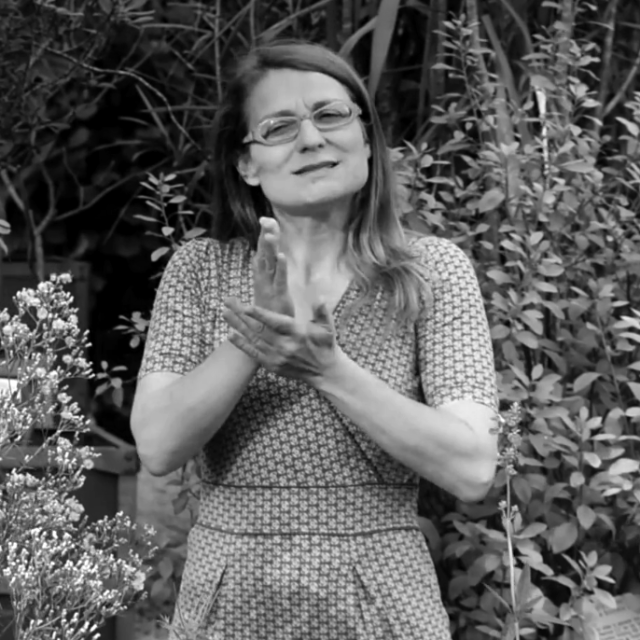Victoria Nyst
Documenting and Describing Gestural Environments of Sign Languages: The Case of Quotable Gestures
Conferencista
-
Victoria Nyst

Victoria Nyst
Victoria Nyst is an associate professor working at the Leiden University Center for Linguistics in the Netherlands. Her research focuses on sign languages and gestures of deaf and hearing people in Africa. Her work in sign language documentation and description led to the publication of four various corpora of sign languages. Currently, she is working on projects on language socialization in families with Deaf parents (Côte d’Ivoire, Ethiopia, Ghana, Kenya, and Mali), on the grammaticalization of size and shape gestures in emerging and established sign languages in West Africa, and on sign language corpus linguistics.
Resumo →
Victoria Nyst
Documenting and Describing Gestural Environments of Sign Languages: The Case of Quotable Gestures
SLs emerge in societies with extensive gestural practices. Research in the past decades suggests that deaf signers use and restructure these gestural practices during SL emergence (van Loon, Pfau & Steinbach 2014, Mesh & Hou 2018). In recent studies comparing West African and European SLs and West African and European gesturing, I find regional patterning in the West SLs and gesturing on the one hand, and European SLs and gesturing on the other (Nyst 2016). The patterns identified concern size and shape expressions, but seem to impact on the use of iconicity in the lexicon (Nyst 2018) and on the phonology of SLs as well, in particular on the set of phonemic handshapes (Nyst 2007, 2020).
The pervasive impact of variation in gestural environments on the linguistic system of SLs calls for a broad effort to study its effect on the typology of SLs. In part, this requires a new research paradigm for gesture studies, whereby the focus is not on the integration of gestural and verbal elements, but on the documentation and description of the visually accessible parts of gesture systems.
In this talk, I discuss new methods and results of recent studies documenting and describing the regional spread of one particular type of gesture in West Africa, i.e. quotable gestures, and their impact on the kinship lexicons of WA SLs. Furthermore, I will explore the hypothesis that quotable gestures not only offer ready-made lexical items to (emerging) SLs, but also form-meaning units and representational strategies for the formation of new signs.
